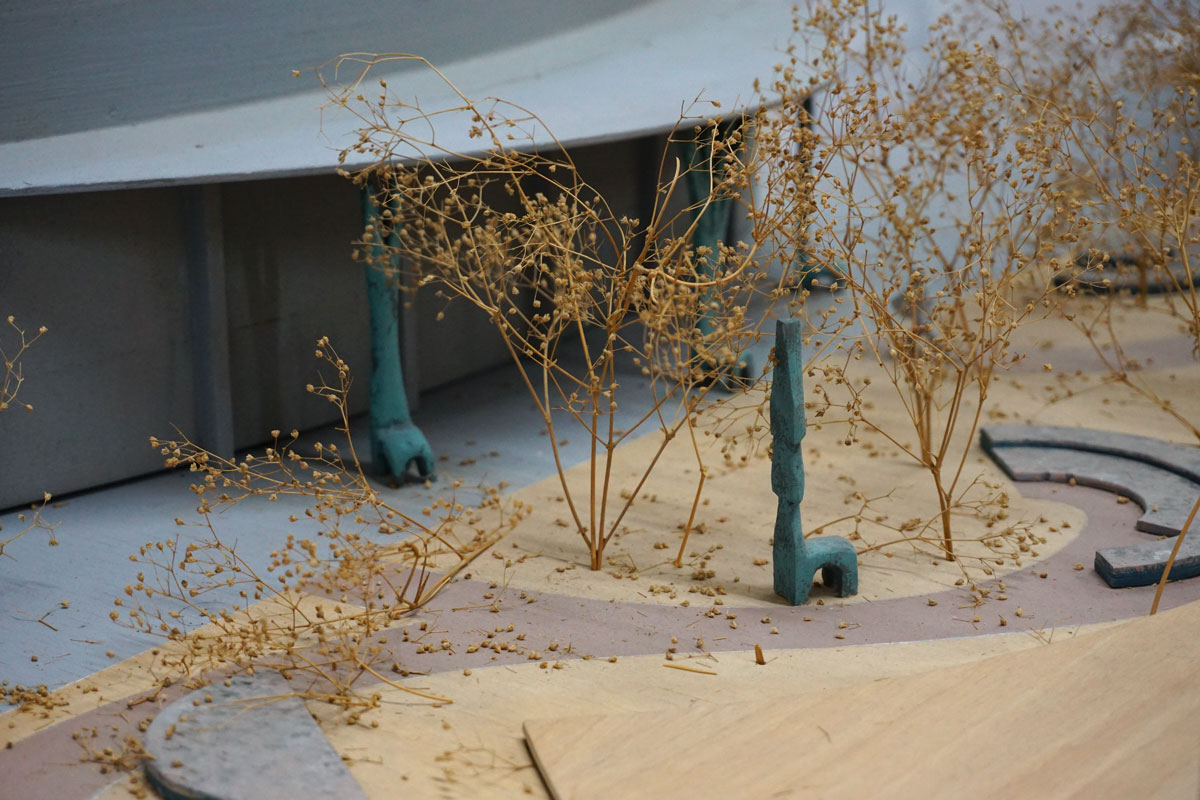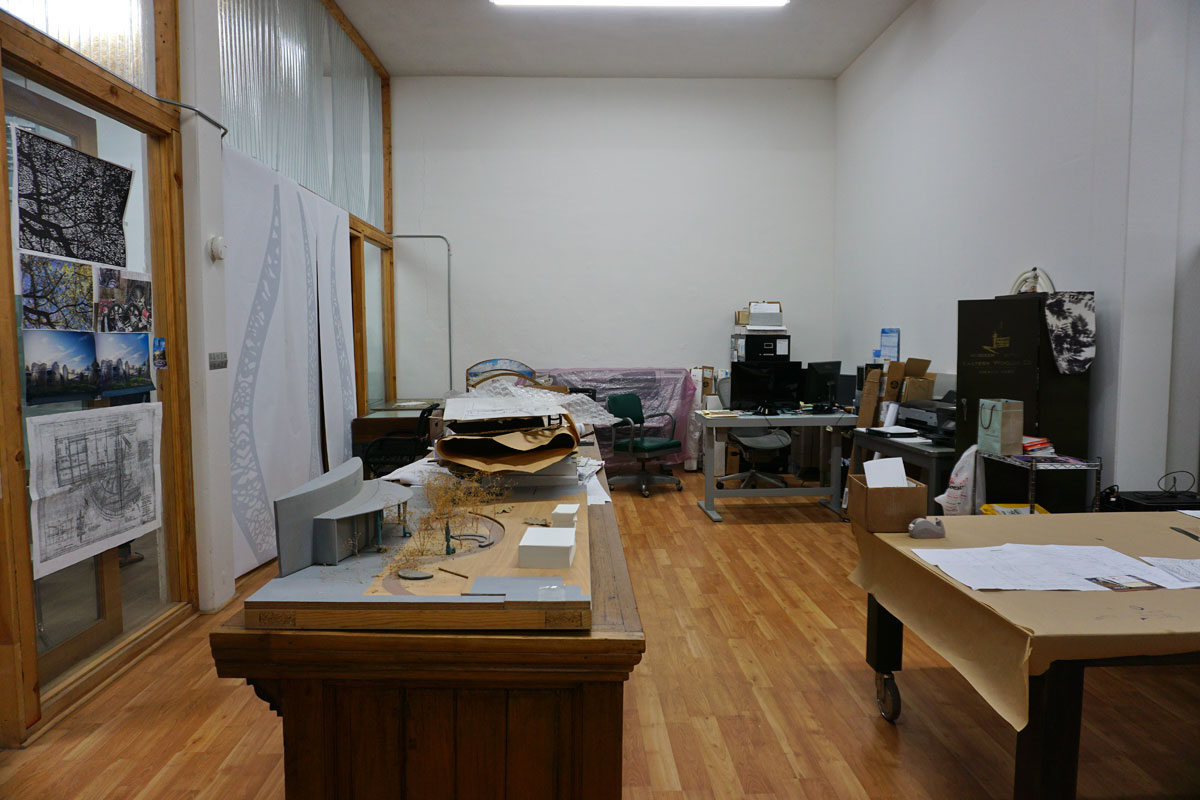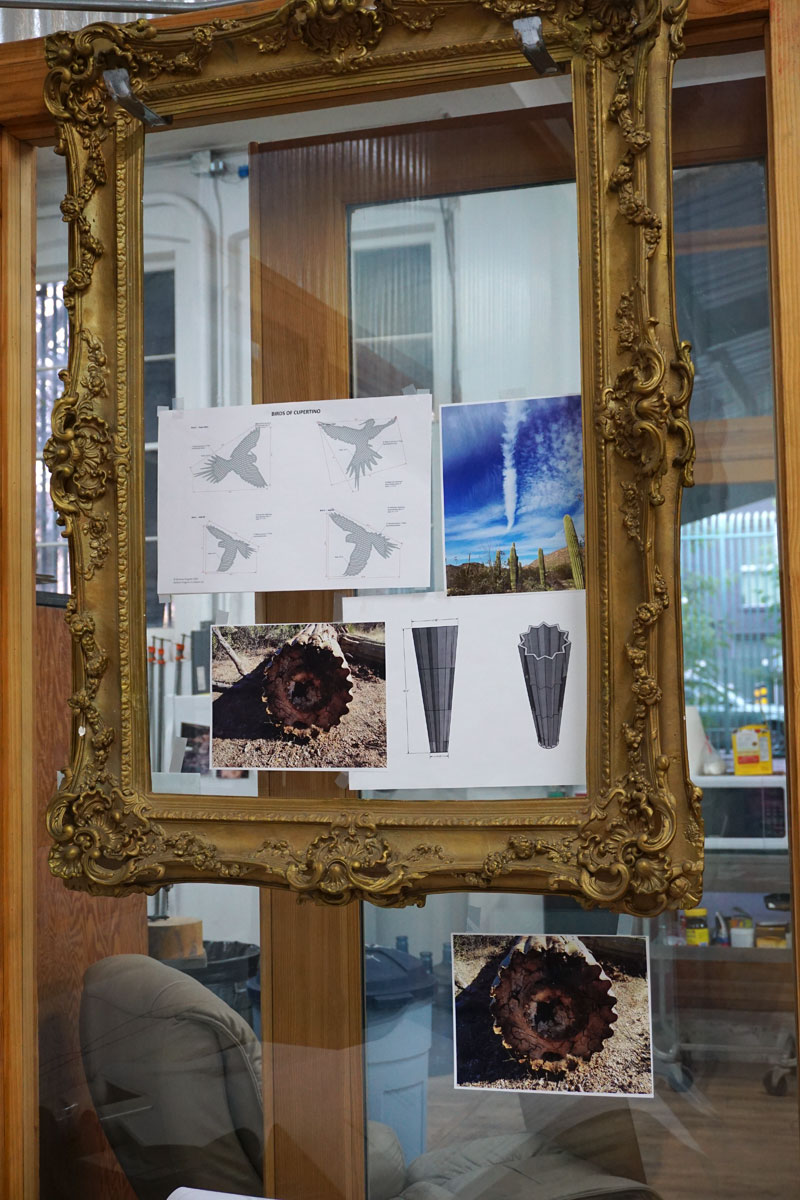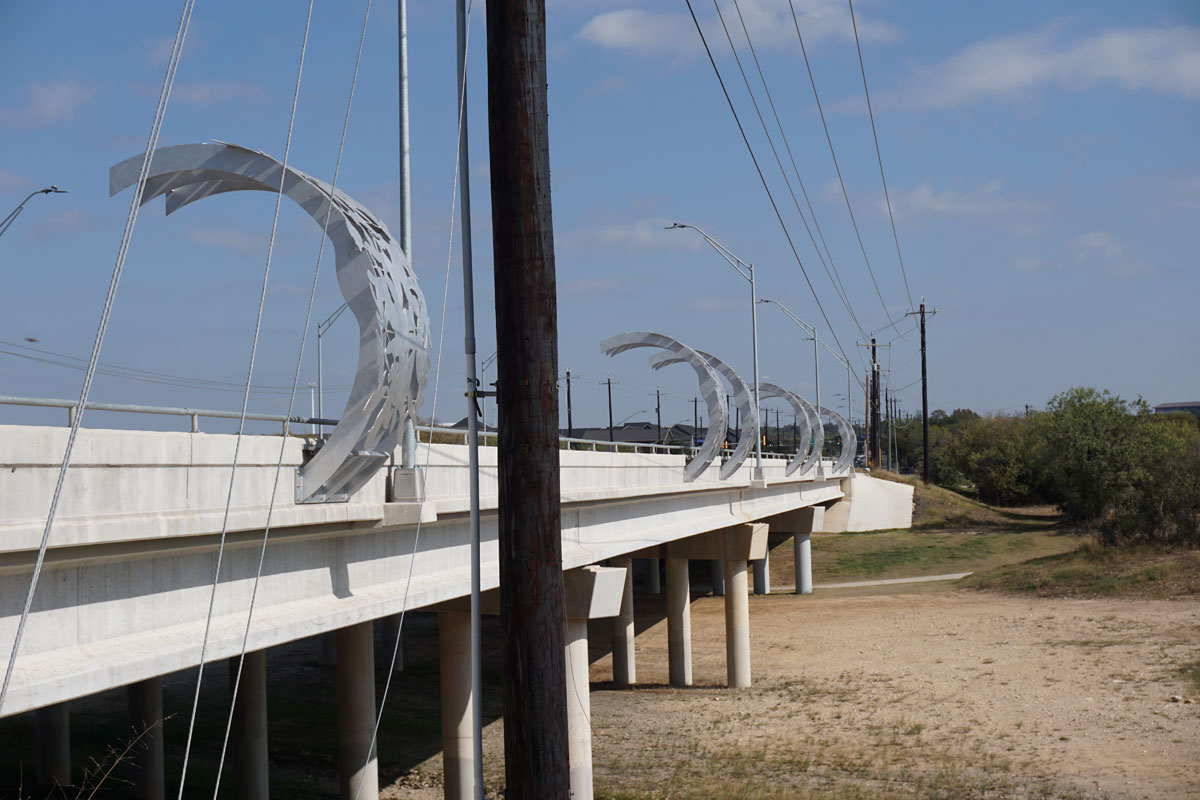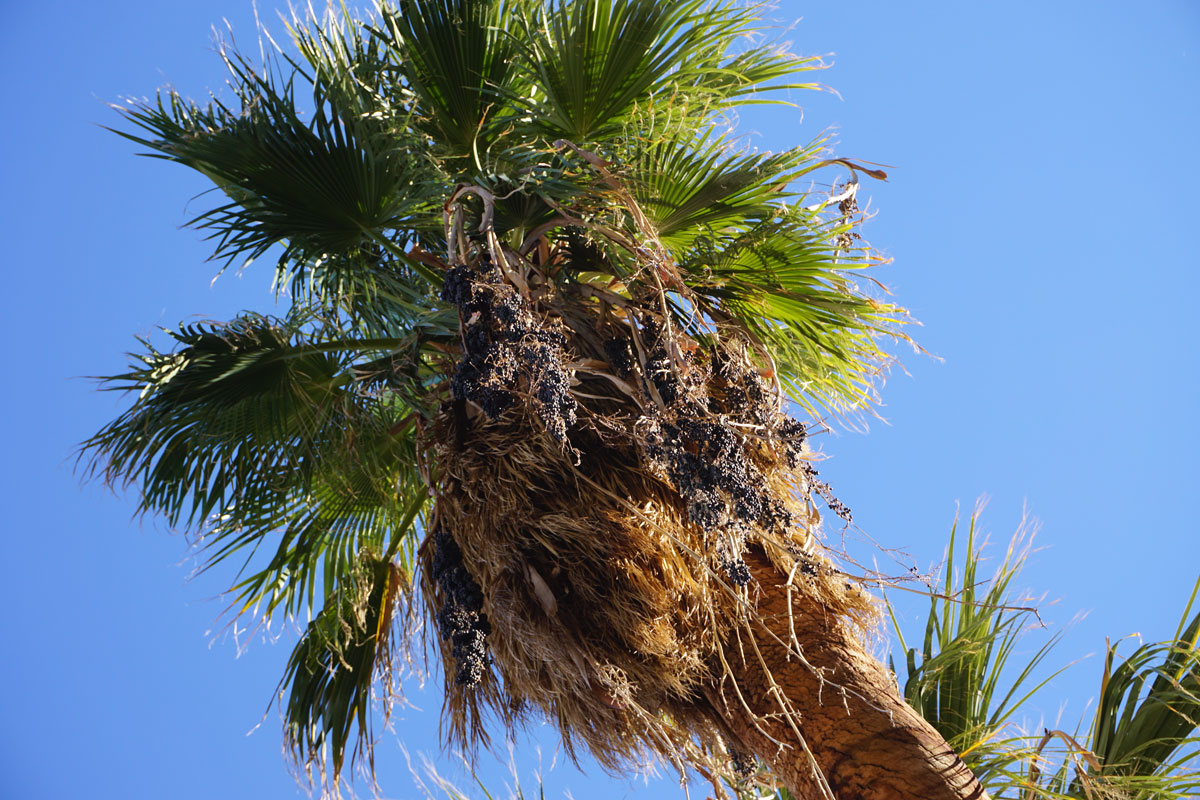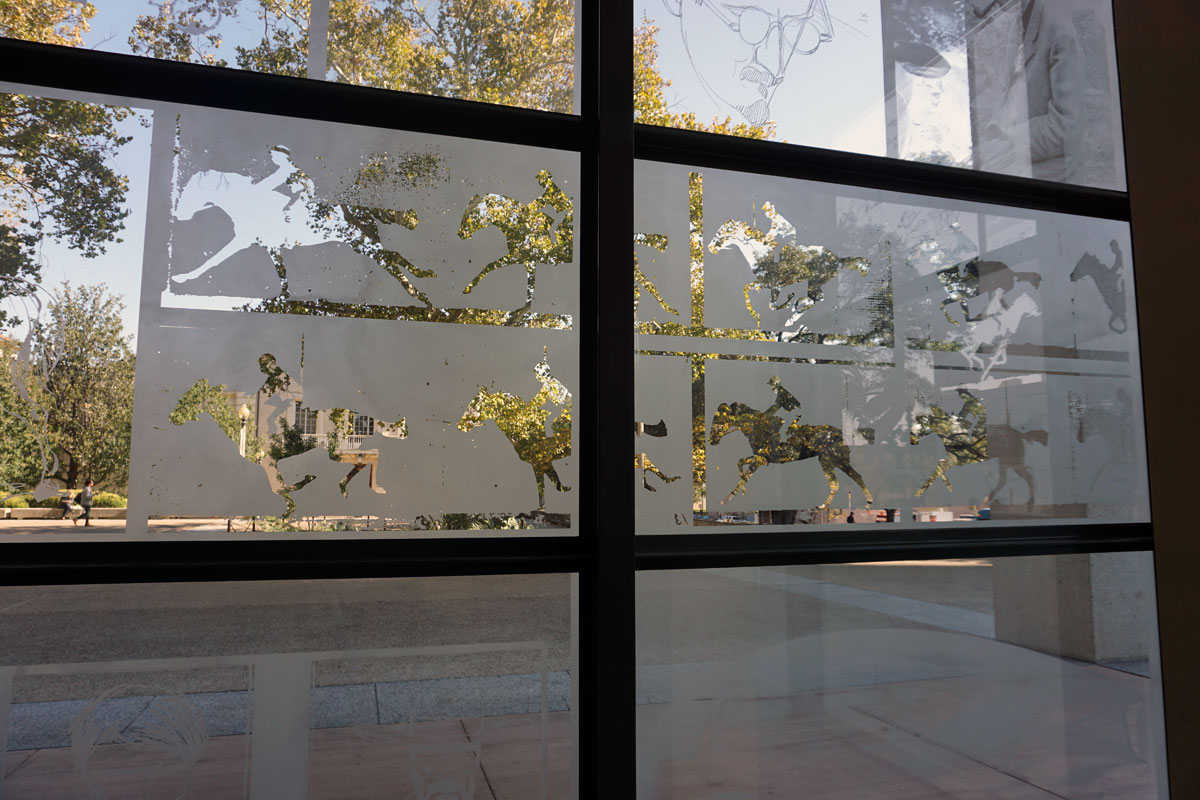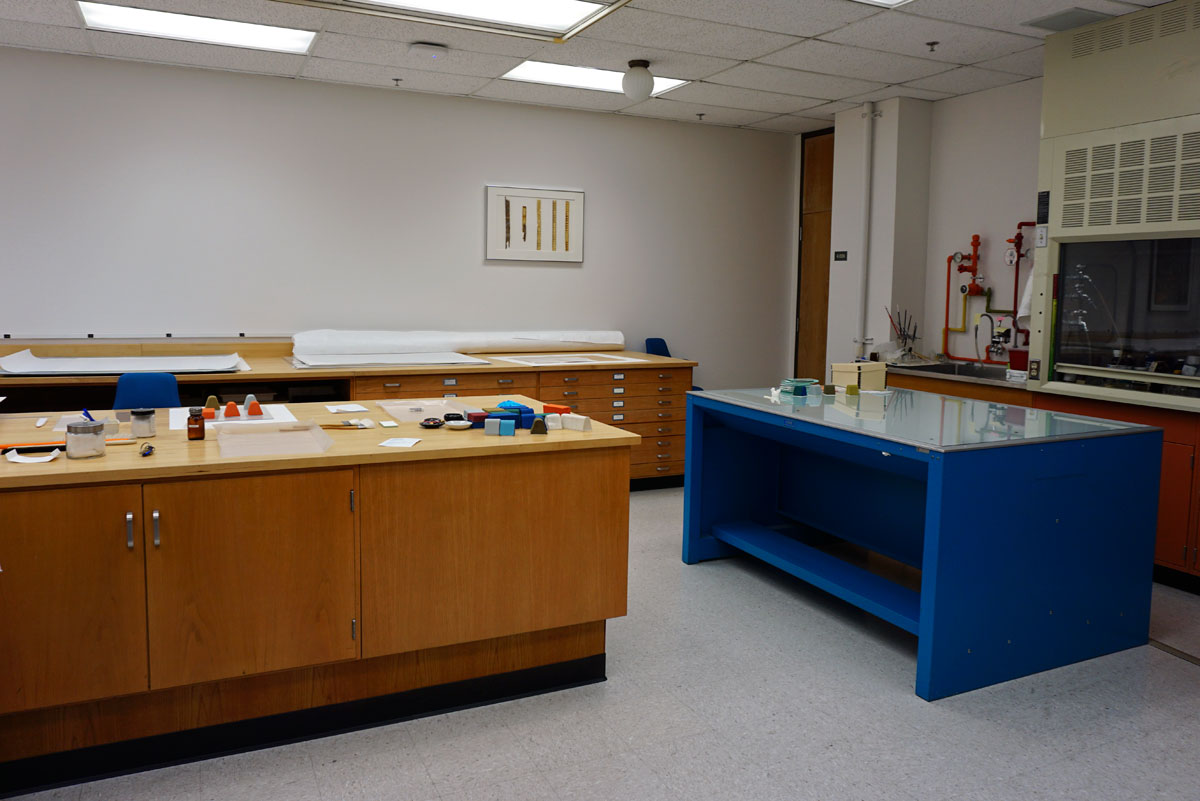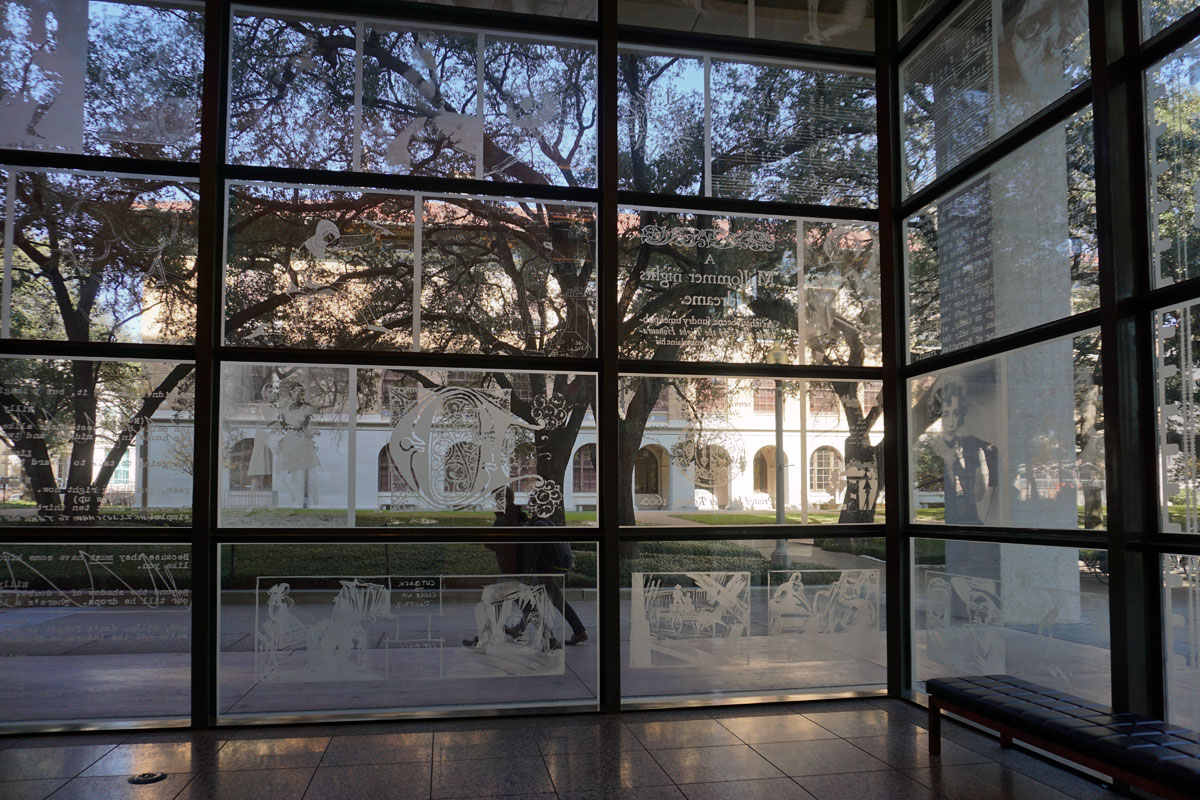I enjoy meeting artists as I travel across the US and Canada. To my pleasant surprise, after emailing Barbara Grygutis for permission to feature her work on my last post, I received an affirmative answer to my request for a studio visit.
© 2018 Louise Levergneux, Barbara Grygutis' studio
Her studio in Tucson is at the back of a historic building inside a greenish cage, as Barbara calls it. It was a delight to walk through the wood and glass doors and enter Barbara’s space.
© 2018 Louise Levergneux, Barbara Grygutis' studio
The studio is considerable and airy, with multiple areas, each with a different purpose: spot for the printer, a place for administration, a corner for the computer-assisted design specialist who turns her ideas and designs into computerized renderings. A large shelf with archives of maquettes/models and workstations everywhere... I was given a complete tour of her studio and the first look at some of Barbara’s up-coming public sculptures.
© 2018 Louise Levergneux, Barbara Grygutis' studio
Stuff is widely distributed and filled with the characteristics of Barbara’s work and personality.
© 2018 Louise Levergneux, Barbara Grygutis' studio
Amazed to see the architectural drawings and maquettes for such work as Front Row Center and Sonoran Passage in Tucson.
© 2018 Louise Levergneux, Barbara Grygutis' studio, maquette for Front Row Center
© 2018 Louise Levergneux, Barbara Grygutis' studio
Large drawings of new work in progress covered windows and walls. Notes or changes had been made directly on the drawings. The stories and connection to their environment were shared... We talked about the desert and how it related to some of the pieces as in Sonoran Passage where pleated and tapered columns look like stylized saguaros.
© 2018 Louise Levergneux, Barbara Grygutis' studio, sketches and images for Sonoran Passage
I went back on 22nd Street to view Sonoran Passage from below the Parkway. These works of art are best viewed at all angles to understand the connection and interaction to the spaces.
© 2018 Louise Levergneux, Sonoran Passage by Barbara Grygutis from 22sd street
© 2018 Louise Levergneux, Sonoran Passage by Barbara Grygutis from 22sd street
As one of the nation's most sought-after sculptor, Barbara impressed me with her openness to share and her warm welcome.
© 2018 Louise Levergneux, à bientôt Barbara Grygutis
Thanks Barbara for a wonderful tour and looking forward to Happy Hour next year!





